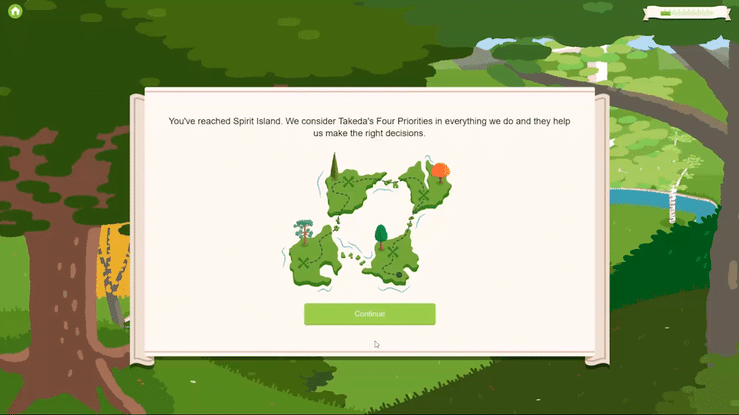Gamification is a visually engaging and creative tool used in e-learning that enables you to introduce new employees to your company training program. It can also be used for ongoing training and making your internal comms more engaging. With hybrid models likely to become the standard for the vast majority of businesses in the post-pandemic world, gamification has a central role to play in interactive e-learning environments.
Training staff in remote locations is highly challenging. How do you keep people motivated if your training material is long-winded and dry? Trainees also need someone to reach out to when they hit a roadblock. At the best of times, traditional training programs can be demotivating and overwhelming. Interactive e-learning has surfaced as an effective solution to overcome conventional classroom methods of teaching.
As we discussed in an earlier post, gamification is a powerful tool that helps to build trust, motivate staff and train employees. Yet despite the benefits, CIO reports that some companies are “gamifying and failing.” For gamification to be a success, the game mechanics have to encourage desired outcomes. Game mechanics are essentially the rules and rewards of a computerised game.
But for e-learning tools, game mechanics have to go beyond the standard concepts of computer games. Points, levels and leaderboards are all well and good, but if the game doesn’t hold the attention of users, employees will not be motivated to learn the job your need them to do.
Establish the goals of the game
The first objective for any game is to know what the aim is. The user needs to have some idea of what the goal is. The challenges should also be testing but achievable. Challenge the player to think outside the box. If the game is too easy, trainees will lose interest and probably won’t play levels they have already passed. Without game retention, there is less memory retention.
Effective game mechanics are features such as dragging and dropping items in the correct order, hunting for hidden objects and collecting rewards for achievements. The reward system would create a sense of satisfaction.
Provide Encouragement
Feedback is a critical component of the interactive eLearning experience. Feedback can be used to offer encouragement or as a guide to help users achieve their goals. Real-time notifications within the game are the best way of providing feedback. You can do this through the use of text-based boxes which flash up onto the screen.
Alternatively, you could create a character that acts as a chaperone for users as they make their way through the game. The animated character acts as a mentor – a substitute teacher in the absence of a live trainer. Because the goal of a gamified training program should be challenging, feedback loops should be created to provide guidance, encouragement and motivation. For example, the feedback could be “almost but not quite, try again” or “Yes, you nailed it, well done! Now let’s [move to the next stage of the process].
Pressure Situations
Including a time limit for each stage achieves a number of objectives. Firstly, it puts players under pressure. This is a useful tool for industries that rely on their employees to keep their cool under pressure. Gamification programs can be used to test how well people perform when the heat is on.
Secondly, people are more inclined to play the game more often if they are motivated by an achievement – beating their personal best. You can attach a reward system to his quickly tasks are performed and include the scores in a leaderboard.
In the right setting, points systems can foster healthy competition. More importantly, they encourage players to keep playing the same levels trying to beat their score and rank higher on the leaderboard.
Track Progress
People feel a strong sense of purpose when their achievements are measured. In a work environment, gamified e-learning tools can spur trainees on to keep trying and better their accomplishments.
The best way to do this is to install a progress bar that shows employees how they measure up to expectations. Employees that are doing well have a good sense of well-being.
The progress bar can be advantageous to underachievers as well. Include strengths and weaknesses so users know which areas need improvement. They also know when to reach out to their trainers and mentors for help. Trainers and managers can also use the metrics to provide appropriate feedback to their team members.
Wrap Up
Gamification offers trainees and trainers plenty of benefits but the game mechanics need to be right to ensure the programs bring trainees up to the level of learning you need.
Do you need to develop game based e-learning either via Articulate Storyline, Augmented Reality or Virtual Reality? Why not drop us an email at info@sbanimation.com, or give us a call on +44 (0)207 148 0526. We would be happy to help. For further reading see our case study communicating change via e-learning by clicking here.











